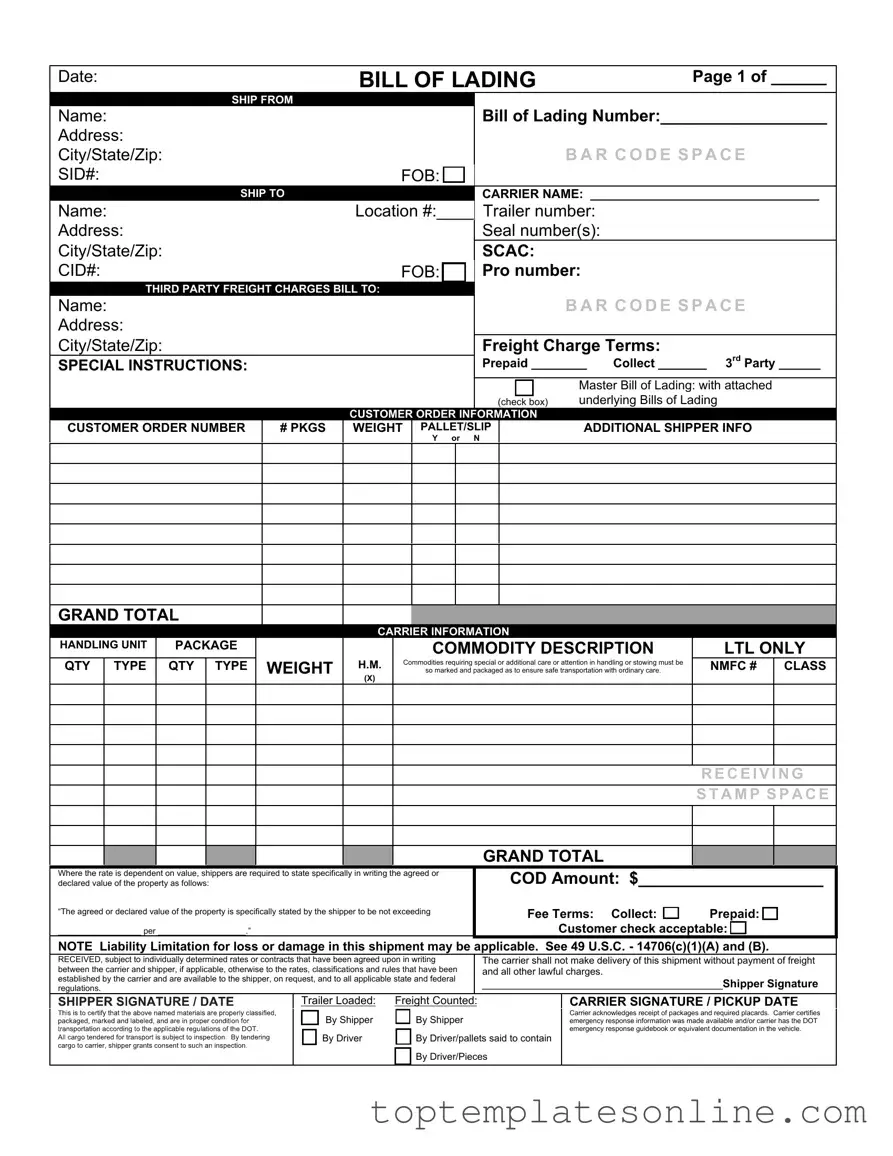The Bill of Lading with a Supplement form is a crucial document in the shipping and transportation industry, serving as a receipt for goods, a contract of carriage, and a document of title. This form not only outlines the details of the shipment, such as the type and quantity of goods being transported, but it also specifies the responsibilities and rights of all parties involved, including the shipper, carrier, and consignee. It often includes essential information like the shipping date, delivery instructions, and any special handling requirements. Additionally, the Supplement section allows for the inclusion of extra details that may not fit within the standard format of the Bill of Lading, ensuring that all necessary information is captured. This flexibility is vital for addressing unique shipping scenarios or additional agreements made between the parties. Understanding the components of this form is essential for anyone involved in logistics, as it helps to facilitate smooth transactions and prevent disputes during the shipping process.
